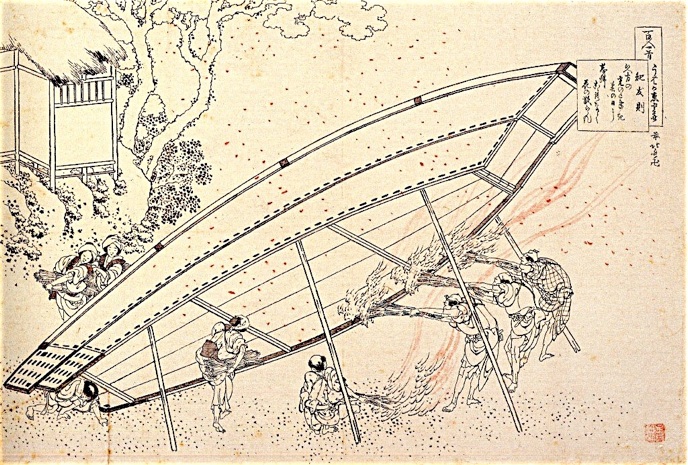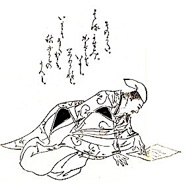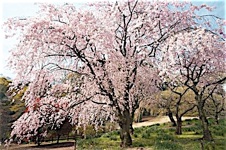紀友則


久方の
光のどけき
春の日に
静心なく
花の散るらむ
きのとものり
ひさかたの
ひかりのどけき
はるのひに
しづごころなく
はなのちるらん
Ki no Tomonori
Under the ancient reign
Of the benevolent sun
In the days of spring,
Why do cherry blossoms
Have to scatter so?
Hokusai


Ki no Tomonori (c. 850 - c. 905) was an early Heian waka court poet, one of the Thirty-Six Immortal Poets and one of the compilers of the Kokin Wakashu, or Kokinshu. He was an older cousin of Tsurayuki (poem 35).
A note above this poem in the Kokinshu says ‘inspired by the falling of the cherry blossoms’. On Hokusai’s drawing for a woodcut we see cherry blossoms falling over workmen busy with the construction of a boat. The interpretations differ from the ‘unrest in the hearts of the people who watch the blossoms fall’ to ‘the unease with the tranquility of imperial power’. It looks like the blossoms falling from the weeping cherry (shidare zakura) are of little concern to the workmen. In spring the seams of the boats are sealed with pitch after the winter hardship, using fire to make the pitch flow into the seams.
Haru no hi could be interpreted instead of ‘spring days’ as ‘the fires of spring’. Hisakata is a pivot word referring to ancient times and also ‘heaven, sky’ implying the emperor. That which is eternal is also forever changing and decaying.

Ki no Tomonori by Kikuchi Yosai
Shidare zakura, weeping cherry
